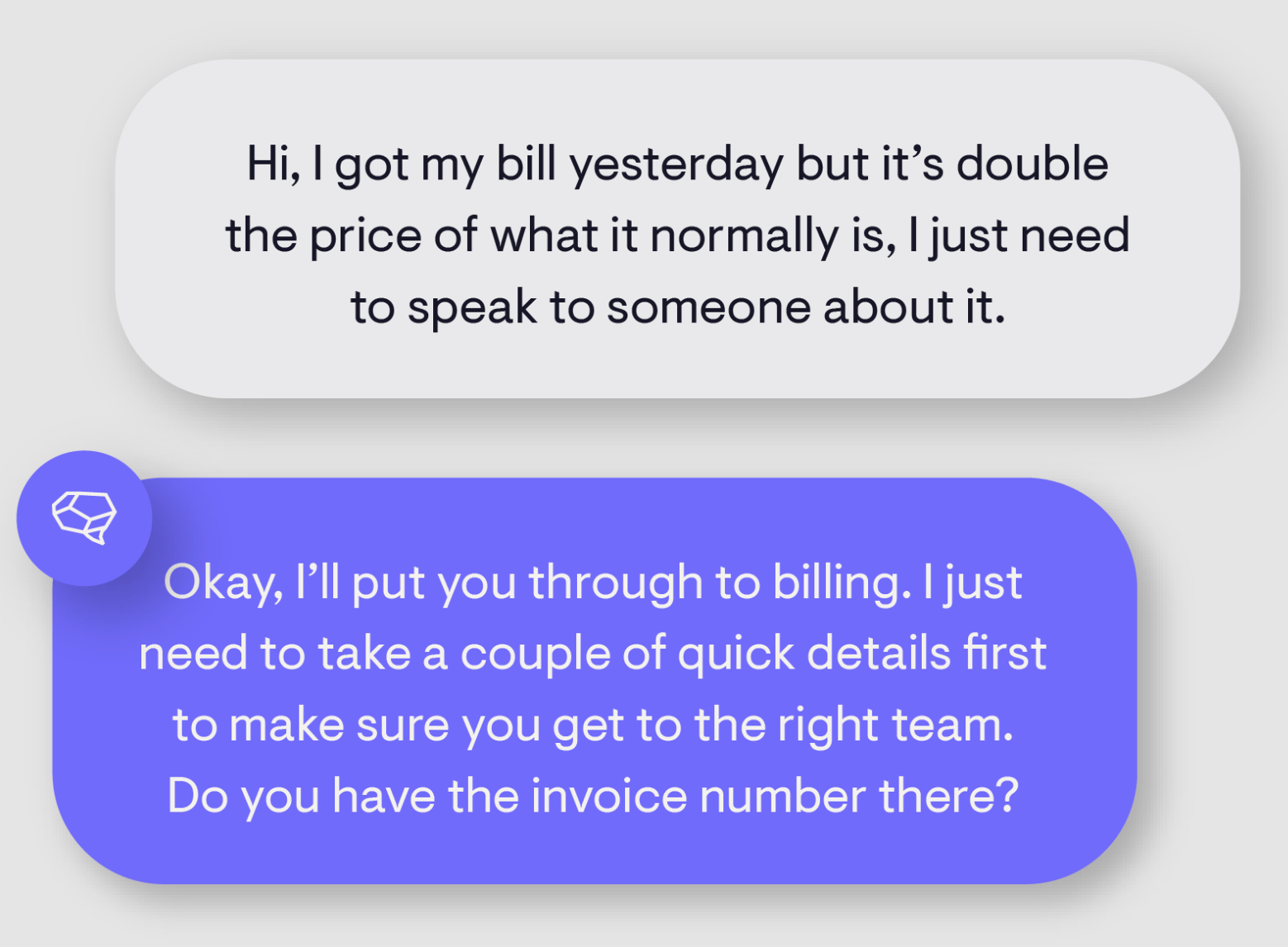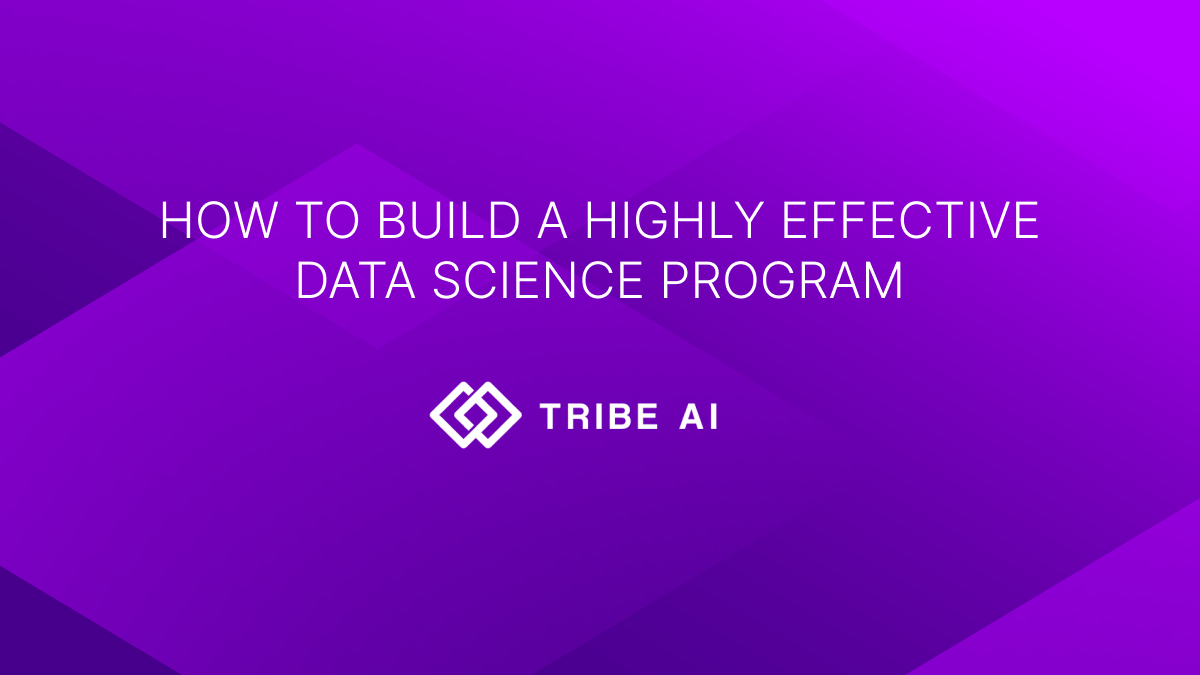Welcome to the future of customer service, where instant responses and around-the-clock support in multiple languages are not only possible — they’re easy.
Conversational AI has been transforming customer service, helping organizations handle support tickets more efficiently, generate more sales, drive priceless insights, and more. Even though the technology is most commonly associated with chatbots, the uses of AI in customer service go well beyond that. In fact, according to data, businesses are most excited about the prospect of AI predicting customer behaviors and uncovering buyer journey insights.
Wondering if that’s even possible? Read on to find out how conversational AI for customer service can help you supercharge your team and extract more value from every single customer interaction.
What is conversational AI?
Conversational AI is artificial intelligence technology that facilitates “conversations” between systems and human users. Conversational AI tools use natural language processing (NLP) and machine learning (ML) to understand and respond to text or voice prompts in a conversational manner. The technology is most often used in virtual assistants, chatbots, and voice-activated systems — if you’ve ever used Siri or Alexa, you’ve seen it in action.
How is conversational AI used for customer service?
The more successful your business, the bigger your customer base — and that inevitably translates to a larger volume of support tickets. And while most organizations do need live agents (AI may have trouble resolving nuanced issues or deciding which tickets need to be escalated), even the most profitable businesses eventually face limitations to how much they can grow their teams — be it budget or talent pool-related.
Specialized tools powered by artificial intelligence can help you stretch your resources further without overworking your staff or compromising the quality of their work (and your customers’ satisfaction). Here are the most common uses of conversational AI that help organizations improve the ROI of their customer service efforts.
Conversational chatbots
Chatbots are the bread and butter of AI for customer service. If your organization has never worked with AI, this is a great place to start.
Customer service chatbots use conversational AI technology to offer customers instant assistance. They can handle a high volume of inquiries, and, as long as they have access to relevant information, they accurately address incoming questions and requests.
Chatbots are best used to handle straightforward and recurring inquiries, for example, questions about shipment details, business hours, return policies, inventory availability, and so on. They can also be used to schedule and handle appointments.
Here’s an example of an AI-powered chatbot, Fin, from Intercom.

Automated message routing
This brings us to another popular use of AI in customer service — automated routing and escalation.
While AI may not be able to adequately handle more complex or sensitive customer inquiries, it can categorize and route messages to the right people or departments based on keywords and topics.
This is what a conversation focused on routing the inquiry for more assistance can look like:

Conversation summaries
Regardless of whether a support ticket is handled by an agent or AI, it’s good practice to keep a summary on record for training and quality control purposes, or to add context to future interactions with returning customers. Agents may have trouble carving time out of their busy days for this additional task — but AI can summarize customer interactions in real time.
This is how Microsoft Dynamics, a popular CRM tool, handles AI-generated chat summaries:

Multilingual customer service
If your products or services attract customers from around the globe, multilingual support is not optional. In an ICMI study, 72% of customers stated that support in their native language increased their satisfaction with the support interaction — and 58% said that multilingual service increased their overall loyalty to the brand.
Thankfully, with modern AI tools, you don’t need a global support team to serve a global customer base. Here’s an example of how AI can seamlessly switch to a different language once it detects it in the customer’s message:

Customer insights
From a business perspective, customer service is more than just a direct line of communication between your business and consumers and a channel for troubleshooting. Your customer service interactions are also a treasure trove of insights about your product, customer expectations, and even your competitors. Analyzing incoming messages at scale will help you identify areas for improvement, and it might even give you ideas for new products and services that should be added to your offering.
Here’s another example of AI in action from Microsoft Dynamics. On the left side of the screen, you can see emerging topics and top topics organized by volume. Arriving at a similar, accurate breakdown manually would take human agents hours and might require help from specialized analyst teams — AI does it automatically, in real time.

Personalized recommendations and upselling
Conversational AI can also help you turn customer service conversations into sales. For example, if a potential customer reaches out to check if a specific product is in stock, your AI assistant can provide that information and suggest similar or complementary products, share relevant offers, or encourage the prospect to sign up for a mailing program that will help drive purchases in the future. Such relevant, personalized recommendations can increase your average basket size and make a significant mark on your bottom line.
Here’s how Ada’s ecommerce solution feeds two birds with one scone: the AI bot encourages a customer to complete their purchase while offering personalized add-on recommendations.

The benefits and risks of conversational AI for customer service
Conversational AI is so eagerly adopted by customer service teams because the benefits of using the technology far outweigh the risks.
Benefits
The most important benefits of using conversational AI for customer service include:
24/7 customer service
Conversational AI tools provide around-the-clock support, making it possible for customers to receive help outside of regular business hours and across time zones.
Instant responses
Using conversational AI to handle simple customer service interactions allows for the instant, automated resolution of the bulk of your tickets — which reduces average response times, increases customer satisfaction, and saves your team a lot of time. According to Hubspot, CS professionals reported saving an average of 2 hours and 11 minutes per day using generative AI to write responses to customer service requests.
Scalability
AI-powered tools can handle multiple inquiries at once, ensuring consistently reliable support, even during the busiest periods — without the need to hire additional staff. With conversational AI, you won’t have to worry for your contact center team if you get a big spike in purchases and inquiries following a particularly successful campaign.
Cost efficiency
By automating repetitive tasks, conversational AI tools reduce your team’s workload, allowing them to focus on more nuanced customer issues. A good AI tool can be an efficient and reliable assistant to your team and keep your recruiting needs under control.
Improved customer experience
Fast and reliable customer service, 24/7 availability, personalized recommendations — what’s not to like? Automated customer service will keep your customers happy. And happy customers are loyal, returning customers.
Risks
If something sounds too good to be true, it likely is. The implementation of conversational AI solutions for customer service does come with some risks. Here are the ones you should keep top of mind:
Misinterpretation of inquiries
Conversational AI tools may occasionally misunderstand more complex customer queries. They can also have trouble understanding colloquial language, idioms, or cultural references. This creates the risk of irrelevant responses or incorrect message routing — and frustrated customers.
Lack of empathy
Conversational AI does a great job replicating human language, but it does not possess empathy. Interactions with AI lack a “human touch,” and systems cannot be bargained with. This may make some customers feel like the organization they’re reaching out to doesn’t care about their issues.
Security and regulatory concerns
Customer service interactions are often centered around sensitive customer information. Using automation systems creates the risk of data breaches, unauthorized access, or going against industry-specific regulations.
The good news is: These risks are manageable. Working with an experienced team of consultants when implementing new technologies will help you gain a competitive edge while staying compliant, sustaining ethical standards, and upholding legal obligations specific to your industry.
How to set up a conversational AI platform for customer service
Getting started with conversational AI for customer service can be as easy as purchasing an out-of-the-box, subscription-based SaaS solution. But every business is different, and you are guaranteed to get more value out of a custom-built solution tailored to fit your specific needs.
At Tribe AI, we help companies from all industries build (and implement, and maintain) bespoke solutions that seamlessly integrate with existing workflows, systems, and data.
Curious how we work with clients? There are two main categories that our projects fall into, based on client needs:
If you need a bespoke solution to a specific business challenge
For businesses looking to solve a specific need by building a bespoke AI product or PoC, or optimizing an existing model for better performance, we offer managed projects.
During managed projects, our consultants and data scientists handle the whole project from start to finish. Managed projects vary in scope and budget — they can benefit startups, Fortune 500 companies, and anyone in between.
Managed projects typically involve the following steps:
- Discovery. Our consultants work with your internal team to understand your business, complete with its goals and challenges. Then, we start mapping out recommended solutions, scoping the project, and assembling a dedicated team of experts.
- Development. The team works in sprints to develop a proof of concept for a custom AI solution. The PoC model helps both the client and the dedicated team understand where in the business generative AI can drive the most value. Throughout this process, we schedule regular check-ins between a dedicated product manager, your staff, and other stakeholders.
- Launch and testing. Once a PoC is finalized, we work with the client to launch it in a live business environment. We then educate stakeholders on how to continuously drive value from the solution and make our team available for regular maintenance work.
After the work is done, we continue the partnership through monitoring and maintenance services to make sure our clients are set up for success.
If you need specialized support for an existing team
For businesses that:
- have an existing team that needs full or part-time specialized support from an AI expert, or
- want to explore the contract-to-hire model
… we offer staff augmentation projects during which we place highly-specialized experts (commonly engineers or data scientists) directly on a client’s team in order to bring in additional expertise, increase the team’s capacity, or meet specific project requirements or deadlines.
Staff augmentation projects typically involve the following steps:
- A 30-minute discovery phone call, during which consultants assess the client’s technical and staffing needs based on current business processes and goals.
- Curating a staffing list. The team at Tribe AI put together a custom talent list based on the necessary experience, areas of expertise, and timelines. This is followed by a detailed walkthrough of the project roadmap. If necessary, we coordinate interviews with the project candidates. On average, this step takes 3 days.
- Getting started. Most of our talent is available to jump on projects immediately upon approval. The average time from kickoff to staffing is 10 days.
Contact our team to discuss your needs and get started on your conversational AI project.
Simplify your customer service efforts and drive a higher ROI with conversational AI
Conversational AI for customer service can help you save time, improve your team’s efficiency, generate more sales, and drive priceless business insights.
Don’t wait — start thinking about how you can use conversational AI to supercharge your customer service function today.
Tribe.ai is an expert conversational AI consulting company that connects businesses with industry-leading experts and data scientists. Contact us to learn more about our services and get started with your bespoke conversational AI project.
FAQs about conversational AI for customer service
Can you use AI for customer service?
Yes! In fact, customer service was one of the first industries to embrace conversational AI at scale. AI can be used to handle simple customer inquiries, route messages to appropriate departments, translate customer service conversations in real time, and more.
What is an example of AI for customer service?
AI-powered chatbots are the best example of AI for customer service. With a tool like Intercom or Ada, you can take simple customer interactions off your team’s plate, reducing their ticket volume, improving overall team efficiency, and boosting your CSAT scores.
What is the best example of conversational AI?
Outside of the customer service context, the best (and most widely available) conversational AI tools currently include Open AI’s ChatGPT, Google’s Bard, Apple’s Siri, and Amazon’s Alexa.
How much does it cost to have an AI chatbot?
The cost of your AI chatbot will depend on many factors, including the features you need, the volume of inquiries your team handles, and your specific business needs that may require customizations. The pricing of simple out-of-the-box tools starts at under $100/month — but most providers only disclose their pricing on request, tailoring offers to suit prospects’ needs.












.png)

.png)


.png)

.png)





.png)


.png)

.png)



